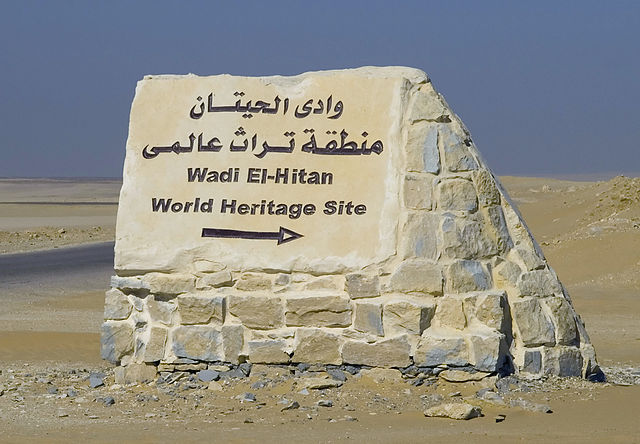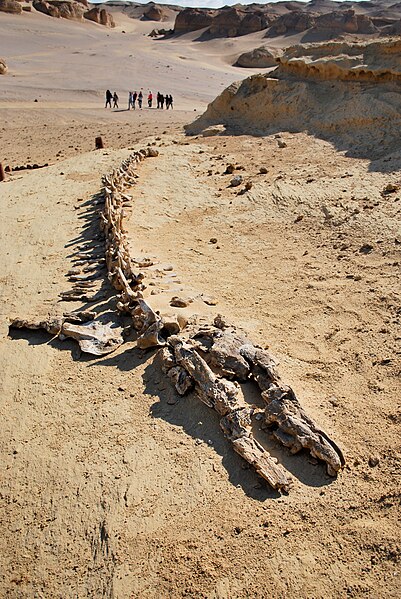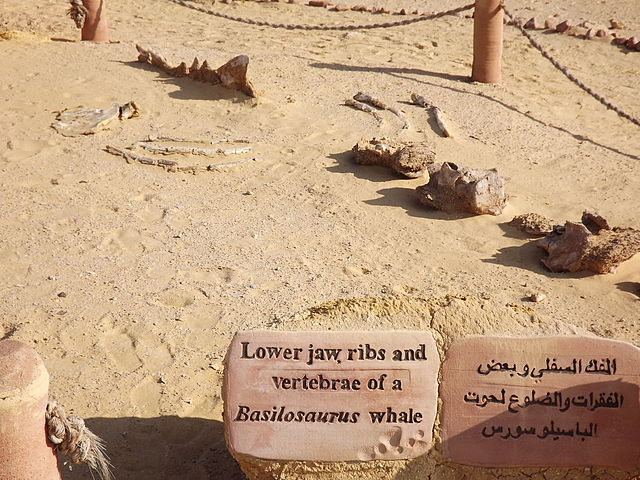Wādī al-Ḥītān is a paleontological site in the Faiyum Governorate of Egypt, some 150 kilometres (93 mi) south-west of Cairo. It was designated a UNESCO World Heritage Site in July 2005 for its hundreds of fossils of some of the earliest forms of whale, the archaeoceti. The site reveals evidence for the explanation of one of the greatest mysteries of the evolution of whales: the emergence of the whale as an ocean-going mammal from a previous life as a land-based animal.
Basilosaurid whale skeleton in Wādī al-Ḥītān
Entrance sign to the site
Skeletons of basilosaurid whales like Dorudon (featured above) were discovered at the site
Partial skeleton of Basilosaurus at Wādī al-Ḥītān
Dorudon ("spear-tooth") is a genus of extinct basilosaurid ancient whales that lived alongside Basilosaurus 40.4 to 33.9 million years ago in the Eocene. It was a small whale, with D. atrox measuring 5 metres (16 ft) long and weighing 1–2.2 metric tons. Dorudon lived in warm seas around the world and fed on small fish and mollusks. Fossils have been found along the former shorelines of the Tethys Sea in present-day Egypt and Pakistan, as well as in the United States, New Zealand and Western Sahara.
Dorudon
Dorsal and right lateral views of reconstructed skeleton of Dorudon atrox
Virtually complete Dorudon atrox skeleton excavated at Wadi El Hitan, displayed at the University of Michigan museum
Dorudon hind limbs, an example of vestigial organs, at Smithsonian Natural History Museum, Washington, D.C.








